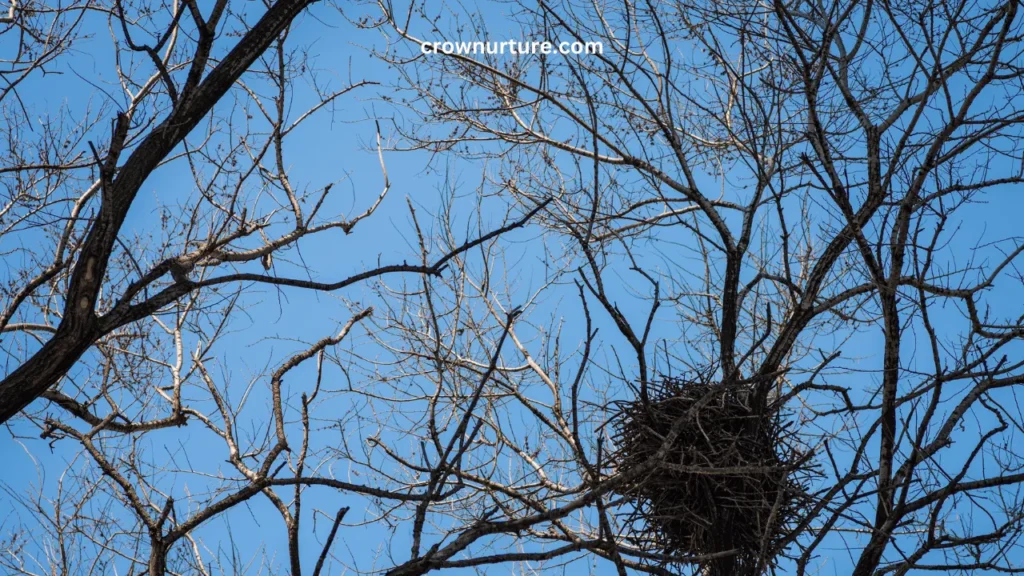At dusk, when the world begins to quiet down, a curious phenomenon often unfolds in the sky. Flocks of crows gather, their loud caws filling the air as they converge on a single spot.
This behavior is more than just a nightly ritual—it’s a glimpse into the social and survival strategies of one of the most intelligent birds in nature. Crows don’t just sleep anywhere; they are selective about where they nest at night.
Their communal roosting habits are shaped by a need for safety, warmth, and social interaction. Observing these gatherings can reveal fascinating details about their intelligence and adaptability.
Why should this matter to you? Understanding crow behavior helps us appreciate the complex dynamics of the natural world and how these birds adapt to human-altered environments.
Whether you’re a bird enthusiast, a farmer, or a curious observer, delving into where crows roost at night provides insights into their survival and interaction with their surroundings.

Contents
- 1 1. Reasons for Communal Roosting
- 2 2. Characteristics of Ideal Roost Sites
- 3 3. Impact of Human Activities
- 4 4. The Role of Crow Roosting in Ecosystems
- 5 5. Conservation and Coexistence
- 6 Conclusion
- 7 FAQs
- 7.1 1. Why do crows roost in large groups?
- 7.2 2. What types of places do crows roost at night?
- 7.3 3. How do human activities affect crow roosting behavior?
- 7.4 4. Do crows return to the same roost every night?
- 7.5 5. What role do crow roosts play in the ecosystem?
- 7.6 6. How can we help protect crow roosting sites?
1. Reasons for Communal Roosting
Crows gather in large groups at night for safety, creating a “safety in numbers” effect. Predators like owls or hawks are less likely to attack a large flock of vigilant birds.
Roosting in groups also aids in thermoregulation, especially during cold nights. The collective body heat of the flock helps them conserve energy and stay warm.
There are also social benefits to communal roosting. Crows exchange information about food sources, potential threats, and ideal nesting sites, showcasing their remarkable intelligence and communication skills.
2. Characteristics of Ideal Roost Sites
Crows seek safety and shelter in their roosting sites. Dense trees with thick foliage and tall structures like bridges provide protection from wind, rain, and predators.
The location must be accessible, close to their foraging grounds, and allow safe flight paths. Proximity to food sources ensures they conserve energy.
Visibility is another key factor. Crows choose sites where they can detect and avoid predators, ensuring their collective safety throughout the night.

3. Impact of Human Activities
Urbanization has led to habitat loss, forcing crows to adapt by roosting in man-made structures or less-than-ideal locations. This disruption can impact their health and safety.
Human disturbance, including noise and construction, often forces crows to relocate repeatedly, affecting their ability to rest and recuperate.
Light pollution further complicates their roosting habits. Artificial lights disorient crows and make them vulnerable to predators, disrupting their natural behaviors.
4. The Role of Crow Roosting in Ecosystems
Crow roosts aren’t just for the birds—they play a role in ecosystem health. By dispersing seeds and controlling pests, crows contribute to ecological balance.
These roosting sites also reflect their adaptability. Observing how crows choose and maintain their roosts reveals insights into their ability to thrive in changing environments.
Their roosting behavior underscores the interconnectedness of nature, as even their nightly routines impact other species and ecosystems.
5. Conservation and Coexistence
Understanding crow roosting habits is essential for conservation efforts. Protecting natural habitats ensures they have safe spaces to rest and reproduce.
To reduce conflicts, communities can adopt wildlife-friendly practices, such as preserving trees and minimizing light pollution near known roosting sites.
Engaging in citizen science initiatives to monitor crow roosting patterns can aid in developing strategies to coexist with these intelligent birds while preserving their habitats.
Conclusion
Crows’ nightly roosting habits reveal their incredible intelligence, social structures, and survival strategies. Roosting communally not only provides safety and warmth but also strengthens their social bonds and aids in ecological balance.
However, their habitats face increasing threats from human activities. By understanding their behavior, we can develop practices that protect these birds while minimizing human-wildlife conflicts.
The next time you see a large flock of crows gathering at dusk, consider their journey and the intricate balance they maintain with nature. Observing their roosting habits reminds us of the importance of coexistence and conservation in a shared world.
FAQs
1. Why do crows roost in large groups?
Crows roost communally for safety, warmth, and social interaction, benefiting from the collective vigilance and shared body heat of the group.
2. What types of places do crows roost at night?
Crows prefer dense trees, tall structures, and sheltered areas that provide protection from predators and harsh weather.
3. How do human activities affect crow roosting behavior?
Urbanization, noise pollution, and artificial light disrupt their roosting patterns, forcing crows to adapt to suboptimal conditions.
4. Do crows return to the same roost every night?
Yes, crows often return to traditional roosting sites, but disturbances may cause them to relocate temporarily or permanently.
5. What role do crow roosts play in the ecosystem?
Crow roosts aid in seed dispersal, pest control, and maintaining ecological balance, showcasing their importance in the environment.
6. How can we help protect crow roosting sites?
We can protect crow roosts by preserving natural habitats, reducing light pollution, and adopting bird-friendly urban planning practices.








